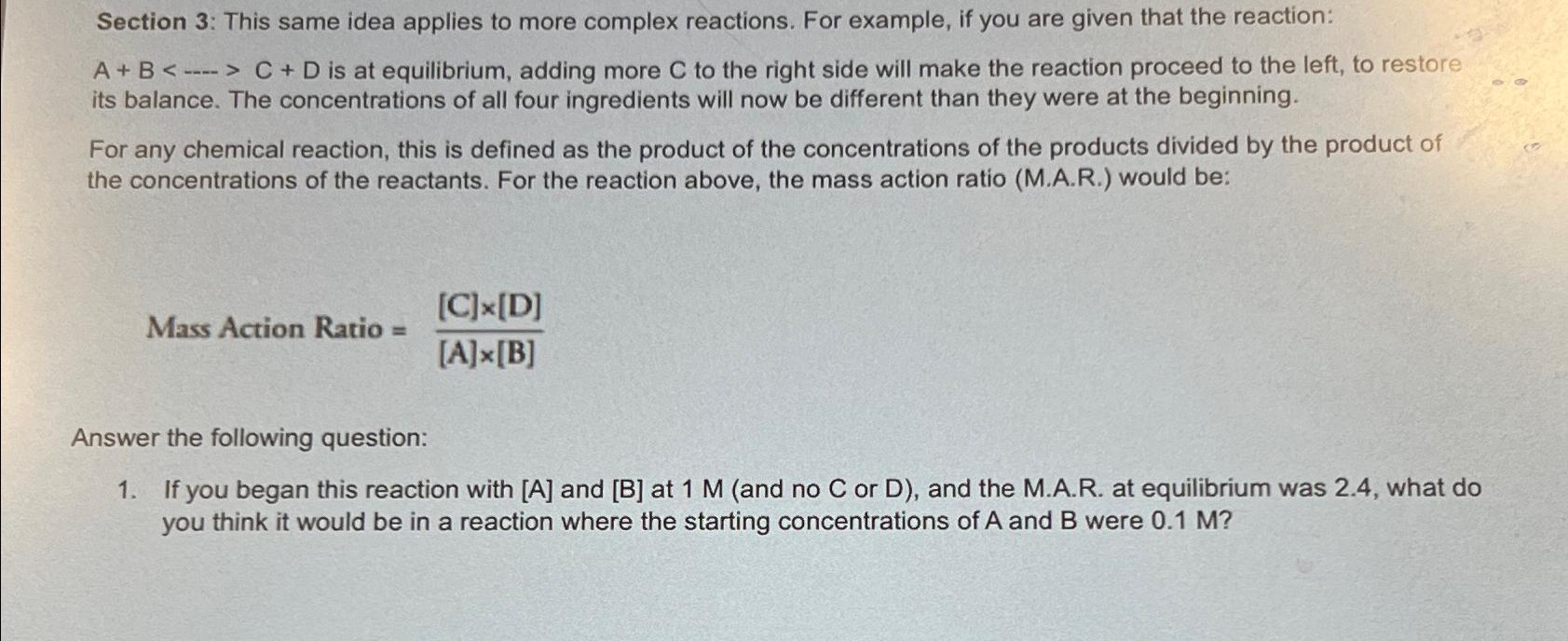Answered step by step
Verified Expert Solution
Question
1 Approved Answer
Section 3 : This same idea applies to more complex reactions. For example, if you are given that the reaction: A + B C +
Section : This same idea applies to more complex reactions. For example, if you are given that the reaction:
is at equilibrium, adding more to the right side will make the reaction proceed to the left, to restore its balance. The concentrations of all four ingredients will now be different than they were at the beginning.
For any chemical reaction, this is defined as the product of the concentrations of the products divided by the product of the concentrations of the reactants. For the reaction above, the mass action ratio MAR would be:
Mass Action Ratio
Answer the following question:
If you began this reaction with A and at and no or and the MAR at equilibrium was what do you think it would be in a reaction where the starting concentrations of A and were

Step by Step Solution
There are 3 Steps involved in it
Step: 1

Get Instant Access to Expert-Tailored Solutions
See step-by-step solutions with expert insights and AI powered tools for academic success
Step: 2

Step: 3

Ace Your Homework with AI
Get the answers you need in no time with our AI-driven, step-by-step assistance
Get Started


